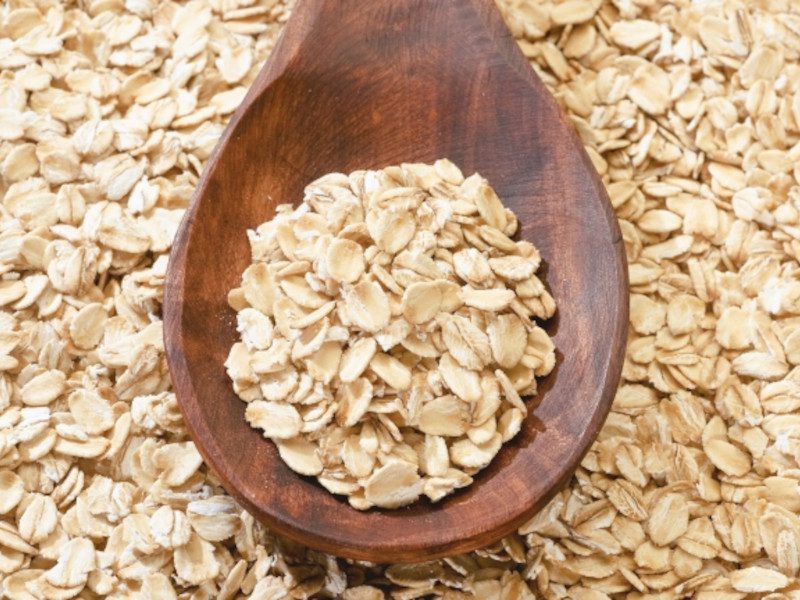In this exclusive feature for International Bakery Magazine, Fernando Garza, OEM Segment Sales Manager, Food and Beverage at ABB Drive Products discusses the benefits for bakeries to adopt motors, variable speed drives and PLC automation
According to Statista, the global market for bread and baked goods is expected to grow by 7.59% over the next five years, producing an incredible 790 billion kilograms of products annually by 2028. The industry is extremely competitive, and bakeries must work to optimise their production systems to stay ahead of the competition.
At the same time, bakeries must join the rest of the world’s industries in reducing carbon emissions as part of the global push to reach Net Zero. Bakeries are a significant consumer of electricity, and that is associated with significant emissions. Therefore, by reducing energy use, bakeries can reduce their associated emissions.
The equipment used in baking is also traditionally very energy intensive. For example, bread ovens are often designed to maximise product quality and productivity, without concern for the energy used. As energy costs remain high, improving energy efficiency should be a top priority for bakeries.
Electric motors are involved in almost all of the vital processes across a bakery – from mixing, forming and proving to conveying and packaging. Many bakeries still rely on old, inefficient models of motors and use imprecise, energy-wasting mechanical throttling to control them.
In addition to the financial benefits of greater energy efficiency and more consistent product quality, stricter food and personnel safety standards and increasingly stringent environmental regulations are on the horizon. That makes now the ideal time for bakeries to invest in new equipment. This will enable bakeries to keep up with demand for products, maintain high standards, and meet new regulations.
Driving better baking
So, how can bakeries improve their processes? The answer lies in using variable speed drives (VSDs) – also known as variable frequency drives (VFDs), or just drives – motors, and programmable logic controllers (PLCs).
Most bakeries still control the speed of their motors via mechanical throttling. For example, this could involve changing the tension of a conveyor’s pulley system to alter the motor’s speed. This approach is outdated and inefficient, since the motor runs at full speed even when it doesn’t need to.
Rather than running at full speed all the time, drives match a motor’s speed with the task’s requirements, significantly reducing the energy required. When no drive is present, a motor will always run at its full speed. Therefore, to slow down the motor, bakery operators traditionally apply mechanical throttling downstream to limit the output.
This is like trying to slow down a car by applying the brake while your foot remains on the accelerator. A better method would be to simply adjust your throttle pedal – and this is essentially what a drive does. In fact, a drive-controlled motor system can offer 20 to 60% savings compared to a system without a drive.
Drives can be fitted to a variety of bakery equipment. In dough mixing applications, the precise control over torque and speed that a drive provides ensures consistent mixing and accurate dosing. This improves the quality of the finished product. In forming operations, such as extrusion, stamping and cutting, drives improve consistency and reduce waste.
In packaging and other conveyor-based processes, drives enable coordinated speed control. This creates a smooth transfer of products between stations, reducing the chance of error.
Drives are also effective for precisely controlling fans. In proving applications, this enables a high level of control over the air temperature and humidity. In the oven, meanwhile, precise fan control ensures that the air circulates effectively, which can reduce baking times and increase throughput. Typical energy savings from using a drive to control oven fans can be up to 25% or more.
Similar benefits also apply to cooling and refrigeration. Drives enable a high level of control over compressor speed, resulting in energy savings. Running the pumps at an appropriate speed also improves a cooling tower’s uptime and reduces the need for maintenance.
Going beyond minimum efficiency
In many regions, including within the EU and China, motor efficiency is measured using the International Efficiency (IE) standards. Higher IE numbers mean a motor is more efficient – an IE4 motor, for example, has 20% lower losses than an equivalent IE3 motor.
In the EU, the Ecodesign Regulation sets out minimum energy efficiency standards for motors. From July 2023, the minimum efficiency for many new motors rated between 75 and 200 kilowatts (kW) is IE4, while other types of motors are required to meet IE3 standards.
The regulation applies to new installations and upgrades – existing motors are exempted. However, this is no reason to ignore the huge progress that motor technology has made in recent years. Even relatively new motors, from as recently as ten years ago, are significantly less efficient than today’s models.
Many bakeries already use relatively modern motors, but additional energy savings are possible by upgrading to the latest IE5 ultra-premium efficiency models. These motors use synchronous reluctance (SynRM) technology to achieve 40 percent lower losses than IE3 motors.
Baking smarter, not harder
Bakeries can also benefit greatly from the use of modular PLCs – small computers that enable the automation of industrial processes. A series of thermoregulators – one for each area of the oven – can provide data to the PLC, which adjusts the power provided to the coils to ensure an even heat distribution. This approach delivers a more consistent product and saves energy. PLCs can also automatically control the start-up/power-down process and ensure safety during the oven’s operation.
Many bakeries still control conveyors manually, so switching between recipes or products is slow. The use of PLCs can greatly speed this up, increasing the bakery’s overall productivity. The human-machine-interfaces (HMIs) that work together with PLCs and drives also make it easy for operators to change recipes efficiently.
Precise process control saves dough
Using a drive also enables greater precision and control over processes, since it can match the motor speed to the exact requirements of the specific application or recipe. This results in a more consistent product – the mixing, texturing and shaping processes are all refined. This precision also reduces the volume of materials like dough that is wasted during the process.
This extends to water, which is both a key ingredient used during baking and a vital resource for cleaning machinery. Some bakeries even have recirculating water features for cleaning pipes and components. Therefore, when attached to these water pumps, the enhanced precision provided by drives can save on this important resource.
Using drives and PLCs makes a bakery more flexible in terms of output. This is particularly useful for meeting seasonal changes in demand. For example, some countries consume various types of breads during different times of the year. A bakery using drives and PLCs could reactively ramp up or down the production according to the season requirements.
Welsh bakery in the savings
An example of this in practice is The Village Bakery in Wrexham, Wales. As the largest gluten-free bakery in Europe, it produces approximately 250,000 loaves each week. The bakery used two depositing lines – conveyor-based systems for dividing the dough into the right weights for rolls and loaves. However, operators were frustrated with the inconsistent results.
The bakery switched to a motor-drive system that achieved extremely high precision. Operators have programmed it for four different speeds to suit different products, and it has reduced the cost of running the line by around 25 percent.
The Village Bakery has also experienced less downtime since upgrading its equipment, as staff can shut down each line independently for cleaning and maintenance. The operators selected equipment with IP66 protection class for simple washdowns.
The upgrades also improved the tin greasing system. The old, low-precision system wasted greasing agent by spraying before and after the tin was in position. The new system greases the tins effectively, and this has resulted in a 10% materials cost saving on greasing agent.
The new system is also significantly more energy efficient, enabling The Village Bakery to save 27% on energy costs. In total, the changes save the bakery around £20,000 every year, meaning that the upgrades will quickly pay for themselves.
Product quality and reliability on the rise
Product quality can also be improved by using automation to directly regulate cooling water temperature and avoid unwanted temperature spikes. Drives and PLCs enable operators to supervise or remotely start and stop different processes. Furthermore, powertrain data collection combined with motor sensors provides operators with useful insights into energy usage, equipment status and overall equipment condition.
This data-rich approach enables operators to identify equipment that needs maintenance before it fails. By scheduling maintenance proactively, a bakery can limit the risk of downtime. It also makes it easier for operators to identify less energy efficient equipment and replace it, as well as spot opportunities to reduce waste and improve product quality.
Drives can also reduce the mechanical stress on motors and driven equipment to significantly improve reliability. Advanced starting, stopping and protection functions – such as smooth-start and speed compensated stop for conveyor systems and cavitation and dry-run detection for pumps – mean lower maintenance costs and less equipment downtime.
Another problem in the bakery industry is cavitation when pumping liquids. Cavitation refers to the formation and collapse of bubbles that damage pumps and pipes in a remarkably short time. It reduces equipment reliability and can affect the quality of some liquids, especially milk. Cavitation occurs when there is a loss of pressure on the inlet side of the pump.
Anti-cavitation software built into all-compatible drives, such as ACS580 general purpose drives, can monitor any changes and make instant adjustments to reduce the pump speed to prevent cavitation. When the inlet pressure recovers, the drive automatically ramps up the pump speed again.
Safer equipment
All-compatible drives also come with a suite of safety features. For example, a safe torque off (STO) feature prevents any motor from starting unintentionally should a piece of equipment malfunction or an accident occur. This protects bakery personnel and enables the affected machine to be safely opened, inspected and maintained.
Any environment that is particularly dusty can pose a safety risk. If an excess of flour that is classified as potentially explosive clogs up a piece of equipment and causes the motor to overheat, for example, it can potentially lead to an explosion. To counteract this, industrial and general purpose drives are available with ATEX-certified thermistor protection modules and safe disconnection. They disconnect the motors from their power supplies if they are at risk of overheating.
Network harmonics – sometimes referred to as “electrical pollution” – are another common issue in bakeries. Harmonics are generated by non-linear loads like LED lighting, computers, uninterruptable power supplies and some drive technologies.
A high level of harmonics present in the system pollutes the electrical network of the bakery and can damage sensitive electronics, cause trips, and overheat equipment – increasing fire hazards. It also stimulates electrical losses in the system, which results in lower energy efficiency.
Ultra-low harmonic (ULH) drives provide precise control of the electrical input drawn from the power grid. This produces a clean electric network in the bakery. It also means that equipment can be rightsized, saving both money and electricity.
Further, PLCs add traceability to production, for example, by providing a means of quality management of food from the start to the end of the entire baking process. Food safety is thus enhanced by quality control management via automation.
Serving up success
Bakeries can benefit greatly from investing in drives, more efficient motors, and PLC automation. These technologies boost a bakery’s efficiency, precision and safety – in turn, cutting costs and increasing productivity.
By adopting more energy-efficient and sustainable solutions, bakeries can keep up with demand while also combatting energy costs and meeting new regulations and environmental standards.
Read more latest industry news and developments in our free to download magazine.
Never miss a story… Follow us on:
![]() International Bakery
International Bakery
![]() @int_bakery
@int_bakery
![]() @Bakeryint
@Bakeryint
Media contact
Caitlin Gittins
Editor, International Bakery
Tel: +44 (0) 1622 823 920
Email: editor@in-bakery.com






